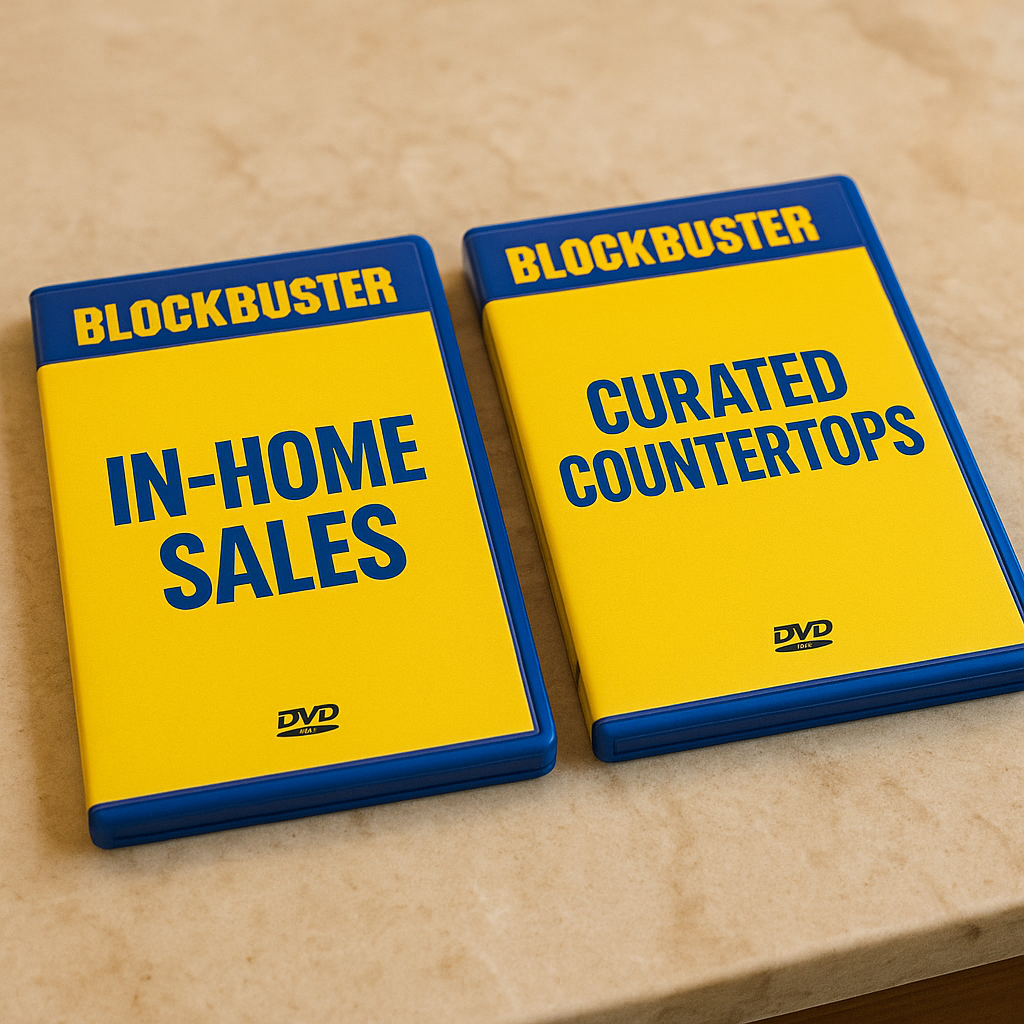In my early 20s, I was a supervisor for ConAgra Foods. We made Snack Pack pudding. One thing I’ll never forget is the sweet smell of the chocolate and vanilla puddings. But besides learning how to make pudding, I learned a lesson that would change the way I worked: Measuring your business makes you more productive and profitable.
At ConAgra, we ran three shifts per day, seven days per week operating a multimillion-dollar piece of equipment. The production line stretched nearly two miles from the pudding mix until the product was cooked, cooled, packaged and wrapped for palletization.
We were the worst performing plant in the company, so they brought in a new plant manager to turn it around. Barry Fischetto was our third plant manager in a couple of years. In manufacturing, efficiency measures how much wasted time, resources and work you put into creating a finished product. Barry did something no previous manager had before. While we had always measured overall efficiency, he started measuring it on an individual basis. This gave each person responsibility for their area as well recognition, and this encouraged improvement.
It turned out we were only 55% efficient, which isn’t great. Our efficiency scores were well below industry averages. We had no idea. We thought we were doing a great job day in and day out. Barry knew we needed to fix that. So, he started a competition. He told us whoever breaks the record of 55% within 30 days would get an incredible prize.
When the team focused on it, efficiency rose from 55% to 60% and kept going. 72%, 75%, 80% … and then even higher. 85% efficiency is considered world-class in manufacturing and we ended up at 95%. That’s a huge improvement, especially when you considered that the machines were mostly automated and staffed by just five people per shift. Those five people had that much impact in just one month.
Oh, the incredible prize? It was a $50 gift card.
You see, it wasn’t the incentive that made the difference, it was the act of measurement.
People are naturally competitive. It’s in our DNA. Without measurement, however, workers have no way to gauge how productive they are and whether they are meeting goals. People want to do well. If you measure performance, you give them a yardstick to measure themselves. This often results in improvement even without management involvement.
You can’t improve what you don’t measure.
These words, most often attributed to management guru Peter Drucker, mean that it’s challenging to improve performance if you don’t measure it. While that’s true, measurement goes further. The very act of measuring something and setting goals makes it something to strive for.
When you track things in real-time and turn them into a competition, magic can happen. It works in production, marketing, sales and every other department. It’s amazing to watch the transformation.
But, how do you know what needs to be measured? You can measure almost anything. Many companies do. But a lot of the data ends up in a report that nobody ever looks at or only gets discussed at board meetings.
What you need to measure are the things that will impact your bottom line. It’s kind of like measuring likes on a social media post. It may make you feel good to see lots of likes, but they are only relevant when they lead to conversions. Adding more likes won’t produce more revenue, but conversions will.
One of the keys to finding what needs to be measured is by challenging assumptions and finding out what’s broken.
Here are three examples.
Example #1: Staffing Shortages
We were working with a stone fabricator that constantly told us they couldn’t hire enough people. That’s not unusual and labor shortages are well-documented across almost every industry. This company had come to accept constant shortages as normal. But it turned out they didn’t have a hiring problem; they had a retention problem.
We compared the number of employees they had (around 50) with the number of W-2s they sent out (100). That’s about a 100% turnover within a year. Yet, the company had never bothered to ask people why they were leaving to understand what they might do to improve retention. Measuring the right things provided insights that spurred action. In this case, exit interviews were essential to finding the root cause of the high turnover.
According to Gallup, companies lose between 1/2 to two times an employee’s annual salary for recruiting, hiring, onboarding, and training workers each time they fill a job. So, a 50-person organization that paid an average $50,000 salary could be dealing with millions of dollars in costs just from turnover. In industries with high turnover, the ROI for improving retention is enormous.
Example #2: Time Management
I was working with a sales team of six at a stone fabrication company. They only had 33 Google reviews while their biggest competitors had hundreds. Of the reviews that were posted, none of them were recent. Despite consistently asking the sales team to gather more reviews, they kept telling us they were too busy to ask clients to leave reviews because they were constantly on the phone.
Now, owners of stone fabrication companies are firefighters. They’re constantly putting out a lot of fires and time is a precious commodity, so we didn’t want to tie them up on something that wasn’t going to produce results. But knowing how important it was to get strong reviews, we wanted to see where they might be able to carve out some time to make it happen. So, we looked at the logs for their business phone system.
It turned out each of their sales reps averaged just 24 minutes per day on the phones! When we presented this, the leadership said the numbers must be so low because they were using their cell phones. Yet, when we asked sales team members how often they used their cell phones for business, they admitted they were used rarely.
They were busy, but we discovered it wasn’t phone time that was keeping them busy. It was email follow-ups and dealing with system flaws, such as unorganized email or having to hunt for paperwork. We implemented a Customer Relationship Management (CRM) system that streamlined their workflow. This reduced the time for several tasks from five to 10 hours per week to less than two. With the extra free time, they learned to ask for reviews, and the number of reviews posted by customers increased.
We also helped them understand the need to track prospects and how many times they needed to reach out to increase conversions. Once they knew the goal and the data behind it, they found time to prospect and nurture customers better, too. They’re now breaking sales records.
Example #3: Repetitive Processes
Stone fabricators know all about changeovers or changes from job to job. Changeover time keeps many workers idle between jobs and can slow down production. It’s a similar situation in every manufacturing industry. Andersen Windows is a good example of how examining repetitive processes can improve productivity.
Andersen Windows is ranked #185 on the Forbes list of the largest private companies with more than $3 billion in annual revenue. They’d been manufacturing windows since 1903 and yet they still recognized they had room for improvement.
We monitored the amount of time it took for job changes, on average it took 33 minutes for retooling or reconfiguration between jobs.
By analyzing the process, we were able to make a few minor process changes — with no additional expense — and reduce changeover time to 22 minutes. This produced a nearly 10% improvement in production time. Think about the impact of that over 30 lines on three shifts, seven days a week. Imagine a stone fabricator that is averaging between 10 and 20 minutes to cut a countertop and think about the time between those jobs. That’s an opportunity!
The Four Disciplines of Execution
To figure out what you need to focus on, find the things that will have the most impact on your business and start with them. As you meet your goals, you can move on to other things later.
There’s a great book by Sean Covey, Chris McChesney and Jim Huling called, “The 4 Disciplines of Execution: Achieving Your Wildly Important Goals.” In the book, the authors talk about the disciplines you need to stay focused on your most important goals.
Discipline 1: Focus on the Wildly Important
By shifting focus from the day-to-day whirlwind of business, you need to focus on what the authors call your Wildly Important Goal (WIG). While your WIG may be different things at different times, it’s important to define it. To be effective, you must also have the discipline to narrow your goals to one or two at most and they must have a defined timetable, such as reducing material waste from stone fabrication by 10% in 12 months.
At a recent Roundtable discussion hosted by the International Surface Fabricators Association, I asked the group where we could make the biggest impact. The resounding response was installers. So, maybe your WIG would focus on efficiency, waste or quality metrics for installers.
Discipline 2: Act on Lead Measures
The second discipline is to focus on only the activities that drive or inhibit the results. While it’s important to track financial performance, it’s even more important to find the things that impact performance and track them. These are your lead measures, the things you must improve to create the results you want.
Discipline 3: Keep Score
People play the game much more intently when they know whether they are winning or losing. Without keeping score, it’s too easy to get caught up in the day-to-day activities that can expand to fill the time (Parkinson’s Law). Scorecards should be shared with team members.
Discipline 4: Create a Culture of Accountability
Once teams know the goal and understand why it’s important to success, they must be held accountable to execute the plan. High-performing teams will even hold each other accountable.
Tracking Your Measurements
There are all sorts of online tools for measuring, tracking and sharing your Key Performance Indicators (KPI) and other metrics, but it doesn’t have to be fancy. A simple way to track is to use a spreadsheet like Google Sheets. It’s free, real-time, and doesn’t take much technical training.
You can build formulas to automate the calculation and evolve as you go. You can print and post it or display it in real-time on a TV or monitor. Because it’s already in the cloud, anyone with a connected device can view the latest numbers.
If that’s too much work, you can always use whiteboards, easel paper, or even post-it notes. Remember, it’s the act of measuring that motivates the action, so any way you do it can have an impact.
Don’t Wait. Start Measuring Now.
Manufacturing has been up and down over the past few years in general, but stone fabricators have had a banner run. Many are still catching up to demand. But last year was the year of the unicorn. We may never see sales like that again. Now is the time to get serious about tracking the metrics that drive profitability.
This will be especially crucial to operate efficiently if the economy continues its current downward trend.
In the countertop and stone fabrication industry, you will benefit from measuring and tracking the right metrics, no matter the size of your operation. However, this may require you to expand your mind a bit. What are some new metrics you could be tracking besides profit and loss statements, install quality reports, slab usage and square footage?
There’s no shortage of possibilities. You might track your customer acquisition cost, close rate, cost-to-hire, employee turnover, machine utilization and more. Pick one or two to start and challenge your assumptions. You may find your CNC machines are only running four hours per day when they could be running most of the eight-hour shift. Maybe your changeover takes too long, or you’re wasting too much material. But how will you know if you don’t dig in? Instead of the smell of pudding, you could be smelling the even sweeter scent of success.
—-
Tagline
Tim Saddoris is the president of Grand Onyx, a firm dedicated to building world-class stone fabricators. Grand Onyx helps companies define operational processes and create road maps to achievement with a goal to enable more predictable revenue, stronger margins and create legacy businesses that stand the test of time. Learn more at https://grandonyx.pro/.
Learn more from Tim as he leads an educational session, The Technology of a Growth Mindset, at ISFA’s Annual Conference. Find out how you can attend at www.ISFAnow.org/annual-conference.





